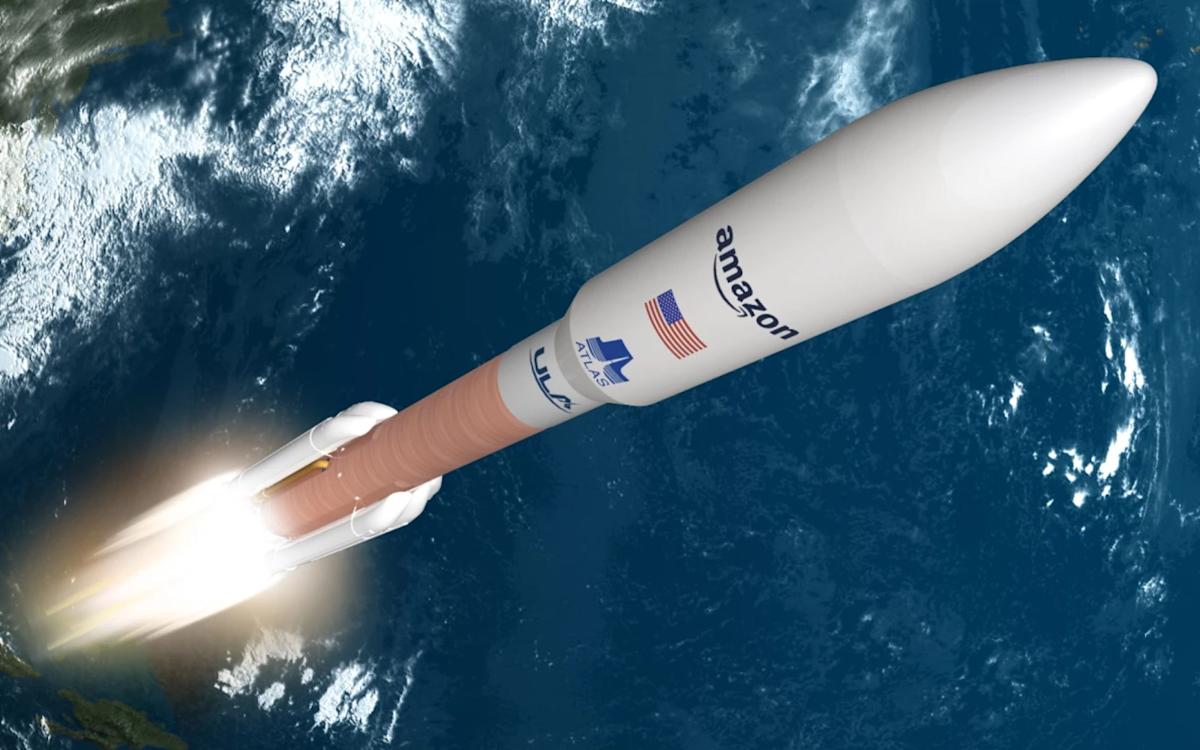Share This Article
The company has launched its first internet satellites and is starting to compete with Starlink
In April 2025, Amazon launched the first satellites as part of the Kuiper project. These satellites are designed to create a global broadband internet network. ULA’s Atlas V rocket launched from the spaceport at Cape Canaveral, putting 27 satellites into orbit. This marked the beginning of the formation of its own orbital constellation.
The company kept the details of the project secret for a long time. It was first mentioned in 2019, but even then, images of the satellites were rarely released. Amazon limited itself to demonstrating production facilities near Seattle. The corporation also demonstrated shipping containers in which ready-made launch equipment was transported to the base. However, no images or videos showed the devices themselves.
Amazon’s approach differs sharply from SpaceX’s strategy, as SpaceX operates the Starlink internet satellites. The latter has the largest constellation of satellites in orbit with 7,200 objects. Second place in terms of the number of satellites goes to OneWeb, with 650 vehicles. From the outset, both companies have been open about the design and technical features of their vehicles. They actively interacted with the public, establishing a high level of transparency. In contrast, Amazon has sought to minimise leaks about Kuiper.

How the launch went
It is worth noting that the internet giant is lagging behind SpaceX in the market for providing broadband services via low orbit. Over the next few years, Jeff Bezos’ corporation plans to launch 3,232 Kuiper satellites. To this end, the company intends to use over 80 rockets of various types. Key among these are the Atlas V and Vulcan rockets, developed by ULA. It was the Atlas V that transported the first satellites into orbit:
- They arrived in space less than an hour after launch.
- The satellites are at an altitude of 450 kilometres.
- Although the ULA rocket launch was broadcast live, five minutes after launch, Amazon requested that the video be interrupted.
- Consequently, viewers learned the details of the flight later.
- The Centaur rocket’s upper stage released the three satellites sequentially from a distributor located in the vehicle’s nose.
As with the project as a whole, the launch of the satellites was kept top secret.
Design features
Amazon later published an official video of the flight, but the recording was blurred. The corporation probably does not want competitors to be able to see the small details and adopt the technology. Nevertheless, the overall design of the satellite is clearly visible in the video, providing a good idea of what the device looks like. The trapezoidal devices are equipped with folding solar panels that are visually reminiscent of OneWeb solutions. In contrast, Starlink satellites have a flatter shape.
The Kuiper satellites were placed individually on a switchgear designed for automated deployment within 15 minutes. Each unit has its own activation mechanism. The project is led by Rajiv Badial, formerly a vice president at SpaceX.

